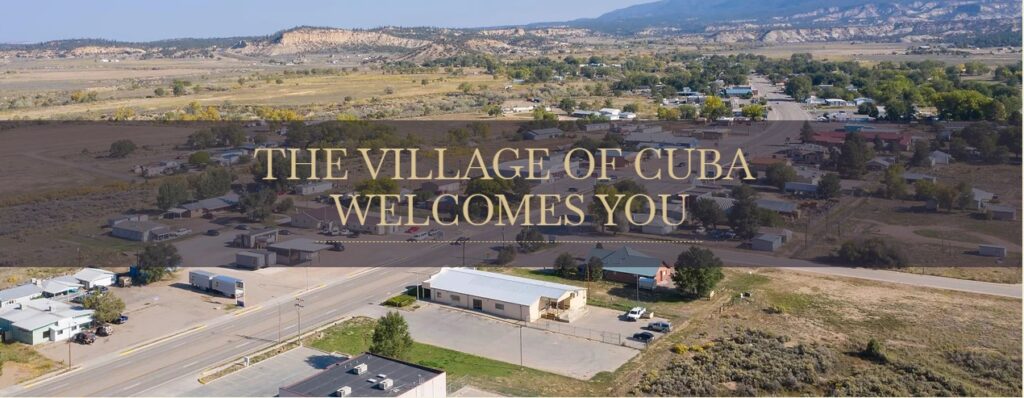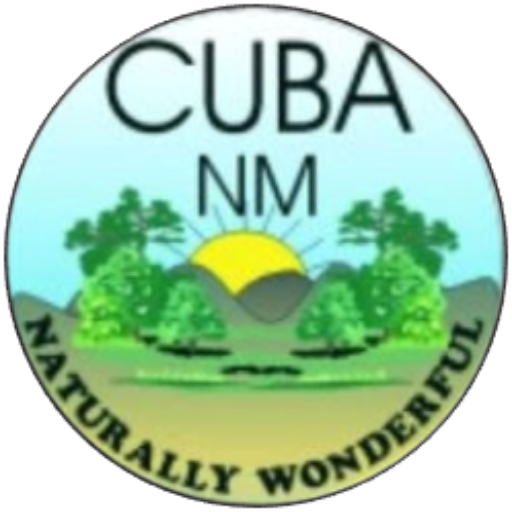
Welcome | Bienvenidos | Yá’át’ééh
Quick Contacts
| EMERGENCY | 911 |
| Sandoval County Public Safety Non-Emergency Dispatch | 505-898-7585 |
| Sandoval County Sheriff Administration | 505-867-7526 |
| Cuba Police Department Administration | 575-289-9157 |
| Cuba Fire Department Administration | 575-289-3456 |
| Village of Cuba Administration | 575-289-3758 |
| Cuba Water Department | 575-289-3758 |
| Cuba Parks & Recreation | 505-639-3418 |
| Cuba Housing Authority | 575-289-3499 |
| New Mexico Gas Company | 888-664-2726 |
| Jemez Valley Electric Coop | 575-289-3241 |
| Cuba MVD | 575-289-2538 |
| Village of Cuba Municipal Court | 575-289-3563 |
| Cuba Senior Center | 575-289-3510 |
| Cuba Public Library | 575-289-3100 |
| Cuba Independent School District | 575-289-3211 |
| Cuba Health Center | 575-289-3291 |
| Cuba New Mexico Post Office | 575-289-3426 |
| Sandoval County Cuba Office | 575-289-9107 |
| Sandoval County Magistrate Court | 575-289-3519 |
| Sandoval County Public Works | 505-771-8500 |
| Sandoval County Solid Waste | 505-867-0816 |
| Sandoval County Cuba Road Yard | 575-289-3307 |
| NMDOT – District 6 | 505-290-0117 |
| Sandoval County Fairgrounds | 575-289-0062 |
| Sandoval County Animal Control | 505-891-7226 |
| Sandoval County Assessor | 505-867-7562 |
| US Forest Service Cuba Ranger District | 575-289-3264 |
| New Mexico Game & Fish | 888-248-6866 |
| Bureau of Land Management | 505-761-8700 |
| Cuba Soil & Water Conservation District | 575-289-3950 |
| New Mexico Veterans Affairs | 505-383-2400 |
| New Mexico Indian Affairs Department | 505-476-1600 |
About the Village of Cuba, New Mexico USA
Na’azísí Bito’ (Gophers’ Water) is the Navajo place name for Cuba. Since the 11th century, this wilderness area of the Upper Puerco was used by subsistence cultures — the Apache, Navajo, and Pueblo people. This region is located within the Navajo Four Sacred mountains, and many landforms are representative of characters in rich lore for indigenous cultures. Today, the Navajo people (Diné) continue weaving the ancestors’ cultural fabrics of language and traditions into daily lives. (Source: Navajo Tours USA)
In 1769, Spanish Governor Pedro Fermin de Mendinueta made the San Joaquin del Nacimiento land grant to 35 pioneering families who had settled the headwaters of the Rio Puerco in 1736. The community, originally called Nacimiento, was later abandoned owing to raids by frontier Indian tribes but was resettled in the late 1870s. The town of Cuba, meaning “large tank” or “vat,” was sometimes called La Laguna in reference to the wetlands that were once prevalent in this area. Settlers drained the area for agriculture and the village officially came to be called Cuba when a post office was established in 1887 before the Spanish American War. (Sources: Jemez Springs Public Library and State of New Mexico)
Once thriving with a robust economy fueled by oil and gas, timber, and copper mining in the mid- to late-1900’s, “Copper City” enjoyed a modern renaissance with a bustling Main Street complete with movie theaters, roller skating rink, department stores, dance halls, and social clubs. Today, Cuba is a village in transition from old to new. Cuba supports a diverse and culturally-rich population to include the many surrounding rural communities with basic goods and services. Looking ahead to diversifying the economy for sustainable growth, the Village of Cuba is working to position itself as a destination for tourism, embracing smart land use and renewable energy, and encouraging a homegrown entrepreneurial ecosystem.
Public Notices
- September 26, 2025 – Cuba Senior Center Relocates to Sandoval County Fairgrounds
- September 26, 2025 – Discovery of Mold at Village Municipal Complex
- September 26, 2025 – Municipal Complex Closed Until Further Notice
- October 3, 2025 – Library Program – Musical Instruments for Kids
- September 24, 2025 – Rescheduled – Regular Council Meeting



